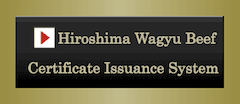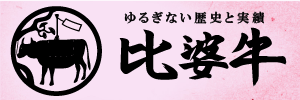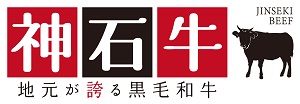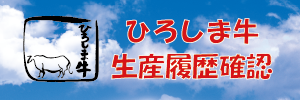
About the Hiroshima Cattle Production Area
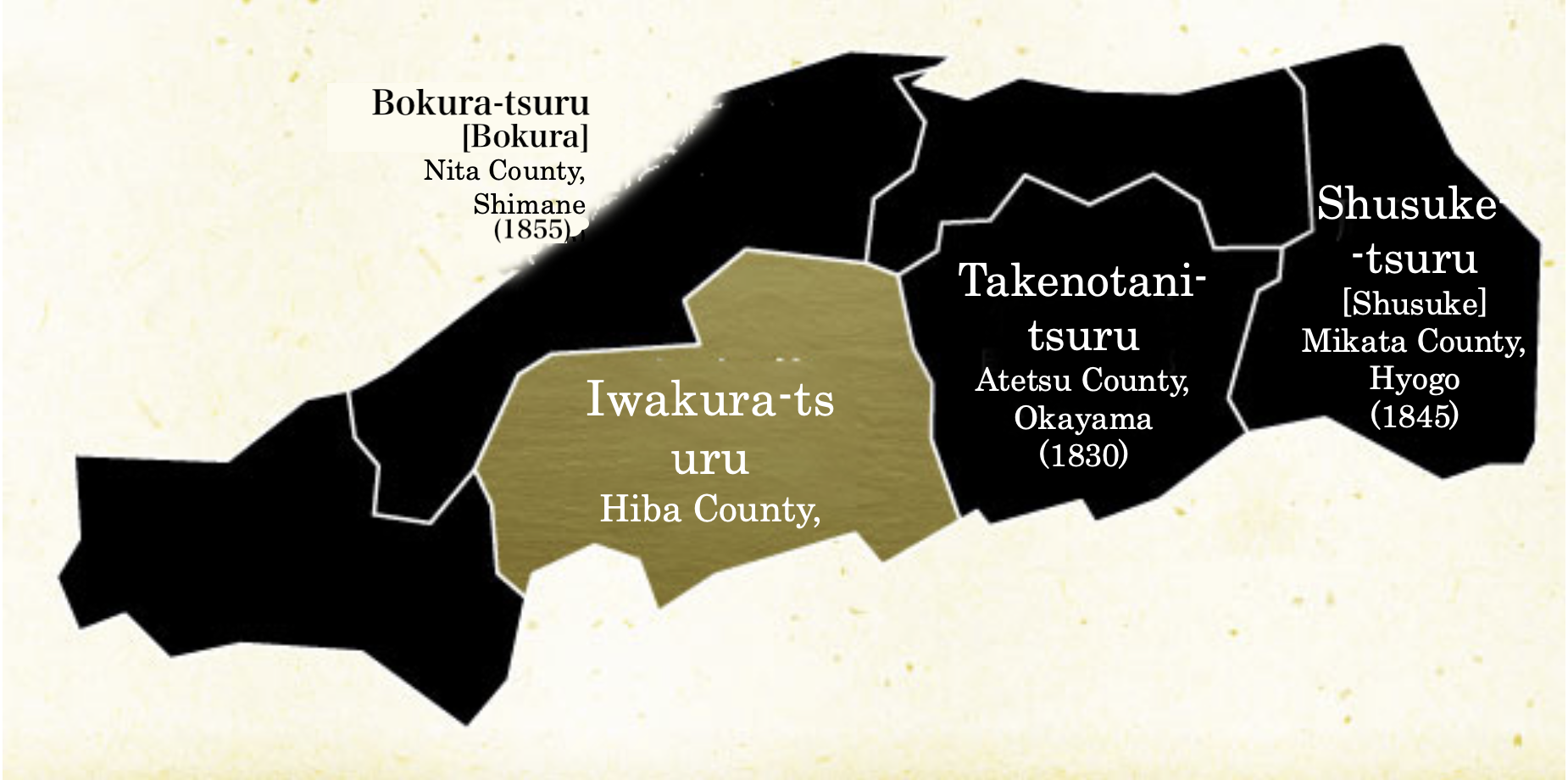
 - history
- history
Japan's Three Largest Cattle Markets
-
The town of Kui in present-day Mihara City, Hiroshima Prefecture,
which was once known as “Kuinosho,” was a place where cattle were actively traded.
The cattle market in Kuinosho prospered as one of the three major cattle markets in Japan,
along with Daisen in Hokinokuni (Tottori Prefecture), and Hamano in Bungonokuni (Oita Prefecture),
attracted people, cattle, and horses from the Sanin and Sanyo regions as well as Shikoku, Kyushu, and Osaka regions
-
The cattle market is said to have begun in 951 (Tenryaku 5), when Gunbei, a livestock dealer from
Bingotera Town (Misawa City), sold a cow to Kanzaemon from Kuinosho, who delivered it to
Kuiinari-shrine, which later came to be known as being associated with cattle and horses.
-
Lord Motonari Mori, who unified the western provinces of Japan with his courage, wisdom, and
strategy during the Civil Wars period, deeply revered the gods and Buddha and built the main shrine of
Kuiinari-shrine in 1557 (Koji 3). Three years later, in 1560 (Eiroku 3), Lord Motonari's third son, Lord
Takakage Kobayakawa, built a new shrine.
Lord Motonari Mori
-
In his lifetime, Lord Motonari Mori rose from a small feudal lord in Aki Province to the ruler of the Chugoku region.
After controlling the Chugoku Mountains, Japan's largest iron manufacturing area at the time,
Motonari Mori promoted the strategically important “Tatara” iron manufacturing method. (Secured iron rights).
-
The “Tatara” iron manufacturing method led to enormous deforestation,
which in turn led to the raising of cattle on pasture on the cleared land,
which in turn led to the raising of “Tsuru cattle,” the root of modern Wagyu cattle.
*Lasting scars: still exist at Mt. Kenashi.
Rokuemon Iwakura
-
Rokuemon Iwakura, who was born in Hiwa Village, Hiroshima Prefecture,
set out to improve the breed of cattle in 1843 (Tenpo 14) and created and
bred the Iwakura cattle (certified as the oldest Tsuru) with an excellent pedigree based on the best local female cattle.
-
Rokuemon was not only an unrivaled genius as a cattle breeder but also had excellent business acumen.
It is said that he greatly contributed to the spread of the Iwakura-tsuru by selling cattle to traders at a nominal price (to facilitate trade).
-
In 1900 (Meiji 33), he was praised as the best Tsuru-cattle producer
in Japan and was given an award by the Minister of Agriculture and Commerce.
 - tradition
- tradition
No.10 Nodaya
-
During the Tenpo era, “Iwakura-tsuru” was famous in Hiba County, and during the Meiji era, “Arizane-tsuru” was famous in Taishaku Village.
The genes from both of these cows were discovered to be clustered in the “10th Nodaya,” and the new “Azuma-tsuru” was created using these genes.
-
Azuma-tsuru proved to be an excellent cow that won the first prize at the Prefectural
Livestock Breeding Show in 1919 (Taisho 8) and produced over 700 calves.
Visit by the Crown Prince
-
In May 1926 (Taisho 15), the Crown Prince (Emperor Showa) visited Hiroshima Prefecture,
and the cattle of Hiroshima Prefecture were shown at the ruins of Fukuyama Castle.
-
At the same time, the Onomichi Livestock Market in Onomichi City and
the Hiroshima Livestock Company in Hiroshima City were honored to receive the imperial entourage.
Cattle Pulling the Hearse
-
On December 2, 1926 (Taisho 15), Emperor Taisho passed away, and a grand funeral ceremony was held
on February 7, 1927 (Showa 2). Although it was customary that Tamba cattle from Kyoto pulled the hearse,
cattle from Hiroshima Prefecture were given the honor of pulling the wheel in recognition of their gentle nature,
high endurance, and beautiful appearance.
-
The cattle that performed this important role were given free of charge at the request of
the prefectural governor and have been passed on as a valuable genetic resource for the modern Hiroshima Wagyu breed.
 - actual results
- actual results
No 21. Fukagawa
-
“No. 21 Fukagawa,” born in Hiwa Town on March 2, 1943 (Showa 18)
is a seed bull directly descended from Azuma-tsuru (Iwakura cow).
-
“No. 21 Fukagawa” was exhibited at the 1st National Wagyu Competition in 1953 (Showa 28)
and won the “Honorary President's Prize,” becoming a representative of the Fukagawa lineage of Hiba cattle.
No.3 Shinryu 4
-
The “No.3 Shinryu 4,” which inherited the bloodlines of Iwakura-tsuru and the hearse-pulling cattle,
was born in Jinseki Town, Jinseki County, and won the top honor prize (the best in Japan)
in the 3rd division for young bulls at the 4th National Wagyu Competition.
-
Ten years later, at the 6th National Wagyu Competition,
its calf won the top gold medal in the beef cattle division, making “No.3 Shinryu 4” the best both as a steer
and as a beef cow in Japan.
The Highest Honor in the Livestock Industry
-
At the 4th National Wagyu Competition, “Otosha 6” was exhibited in the Registered Breeding Group division
and won the Prime Minister's Award, the highest honorary award.
-
In the 5th National Wagyu Competition, a calf of “Kuritomino 10,” a direct descendant of “Otosha 6,”
was exhibited in the Registered Breeding Group division and achieved the feat of winning the championship
for the second consecutive time.
-
In the following year, 1988 (Showa 63), it was awarded the Emperor's Cup, the highest honor
in the livestock industry, at the Agriculture, Forestry, and Fisheries Festival.
It gained fame as “Hiroshima, the best cattle producing region” in Japan.


 - history
- history - tradition
- tradition - actual results
- actual results
